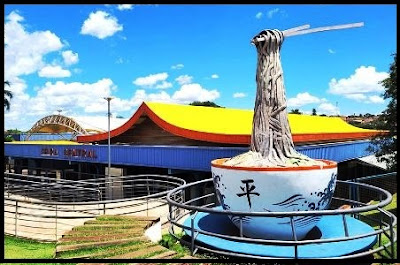“SOBÁ” = “SOBA”
= “(そば
or 蕎麦?)“ - Is a type of thin
Japanese noodle made from buckwheat flour. It is served either chilled with a
dipping sauce, or in hot broth as a noodle soup. Moreover, it is common in
Japan to refer to any thin noodle as soba in contrast to udon (thick wheat
noodles). It takes three months for buckwheat to be ready for harvest, so it
can be harvested four times a year, mainly in spring, summer, and autumn. In
Japan, buckwheat is produced mainly in Hokkaido. Soba that is made with newly-harvested
buckwheat is called "shin-soba". It is sweeter and more flavorful
than regular soba. In Japan, soba noodles are served in a variety of settings: they
are a popular inexpensive fast food at train stations throughout Japan, but are
also served by exclusive and expensive specialty restaurants. However, soba is
traditionally the noodle of choice for Tokyoites. This tradition originates
from the Tokugawa period, when the population of Edo (Tokyo), being
considerably wealthier than the rural poor, were more susceptible to beri beri
due to their high consumption of white rice, which is low in thiamine. It was
discovered that beri beri could be prevented by regularly eating thiamine-rich
soba. In the Tokugawa era, every neighborhood had one or two soba
establishments, many also serving sake, which functioned much like modern cafes
where locals would casually drop by for an informal bite to eat. “SOBÁ”
is occasionally used to refer to noodles in general. In OKINAWA, “SOBÁ”
usually refers to OKINAWA SOBA, a completely different dish of noodles
made out of flour, not buckwheat.
OKINAWA SOBA is also quite popular in
the city of CAMPO GRANDE, Mato Grosso do Sul, Brazil, due to influence of
Japanese (OKINAWAN) immigrants. It is eaten at street markets or in special
restaurants called "SOBARIAS".
Then, visit Campo Grande,
you’re welcome…


Nenhum comentário:
Postar um comentário
LEU? COMENTE!!!